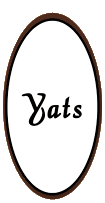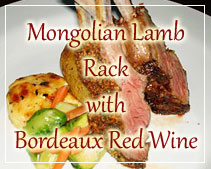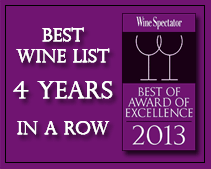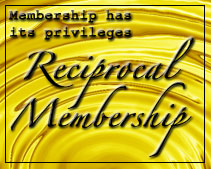Wineries pour it on to lure Millennials
Increasingly, Chardonnays, Pinots and Cabernets are sharing shelf space at your local store with some unusual names – such as Bodacious Brunette red and Buxum Blonde and Angel Food whites.
Veteran wine collectors might turn up their well-trained noses. But the wineries promoting such brands aren’t targeting those buyers. With many of their best customers nearing retirement age and starting to cut back, American vintners are going after younger consumers in a bid to keep their $33 billion industry growing.
That means more irreverent labels, easy drinking wines, singles events and laid-back tastings – all aimed at demystifying the elite atmosphere surrounding wine while grooming the next generation of oenophiles.
“The battle is on” for younger drinkers, said Danny Brager, an alcoholic-beverages expert for global measurement company Nielsen. “Everyone’s being aggressive.”
The courtship was on display last fall in a former bank building in downtown Los Angeles, where event organizing company Second Glass hosted one of its Wine Riot parties.
To bass-heavy tunes mixed by a DJ, more than 1,200 young patrons paid $60 each to wander by booths set up by wineries and get unlimited pours from a selection of about 250 wines.
Smartphone app
A free smartphone app helped the guests, mostly in their 20s – resplendent in their jeggings and plaid – navigate the event and remember the wines they liked. They flocked to the temporary tattoo station and photo booth, noshing on French fries from food trucks and sipping Rose d’Anjou, touted by posters as pairing well with Thai food and burgers.
“It’s fun socializing and getting tipsy,” said Ellie Yi, 26, an advertising account executive who attended the Los Angeles event with eight friends. “Nobody’s judging you if you don’t appreciate the ‘complex blends.’ ”
Second Glass founders Morgan First, 29, and Tyler Balliet, 32, launched Wine Riot in Boston in 2009 to educate and engage young drinkers and took the events nationwide two years later. Their typical guest: novice drinkers, averaging 27.5 years old. The vibe: unpretentious.
Wineries love the events too. In Wine Riot’s early days, First and Balliet drew participants from wineries owned by friends and acquaintances. Now, spots for booths sell out six months in advance, creating a waiting list of labels.
Baby Boomers have been the main driver of the U.S. wine market for years, making up 40 percent of the customer base today. They tend to have more sophisticated tastes and are more inclined to buy expensive fine wines. West Coast wineries depend on the demographic for 44 percent of their sales, according to a survey by Silicon Valley Bank.
But Boomers born right after World War II are starting to retire. As they adjust to fixed incomes, they are downsizing their wine spending and the amount they drink, according to research group IBISWorld.
A younger crowd
Meanwhile, the youngest drinkers, 21- to 34-year-olds known as Millennials, are looking more appealing.
For starters, there are a lot of them – roughly 70 million. But many young drinkers already are being wooed by the craft beer craze and the rise of cocktail culture, conditioned by celebrity endorsers and targeted marketing to gravitate toward sudsy brews and hard liquor.
The wine industry wants to convert Millennials to Malbecs and Moscatos while they’re still young, hoping to create a lifelong clientele.
Young drinkers are enthusiastic wine students, having been more exposed to wine at an earlier age than their parents. And more than half said they’re boosting their wine consumption, according to a report from the Wine Market Council trade group.
“The take-away is that while Baby Boomers are still technically our best customers, Millennials as a group … are the single most dynamic target for wine marketers,” said John Gillespie, the council’s president.
Wine companies also are churning out promotions with an eye toward being less stuffy and more sassy.
Newcomer Calendar Girl Wines dubs its red and white wines Bodacious Brunette and Buxom Blonde. Constellation Brands, owner of old-guard label Robert Mondavi, is trying out feisty brands such as Primal Roots and Simply Naked.
Hot celebrities are lending their names to labels. Early this month, Brad Pitt and Angelina Jolie said they were releasing a vintage rose wine called Miraval from their French estate, Chateau Miraval in Correns, for shipment to the United States.
Pop star Stacy Ann Ferguson, better known as Fergie of the Black Eyed Peas, unveiled her Ferguson Crest label in Santa Barbara County last fall. Barrymore Pinot Grigio, created last year by actress Drew Barrymore, reflects her “fresh, dynamic and fun” personality.
Wine magazines are doubling the number of young writers and reviewers. Napa wineries are creating special tours for young guests clad in jeans, yoga gear, flip flops and even Mohawks.
“Top-tier brands that used to be untouchable are, for the first time, realizing that they can’t just rest on their laurels,” said Lara Sailer Long, wine director for the Los Angeles Food & Wine Festival. “They’re trying to dust off their images and appeal to the young drinkers, not just the collectors.”
Some huge parties
Event company Rock N’ Roll Wine organizes tasting parties in Las Vegas, such as one last fall featuring indie band Young the Giant. Some 3,000 guests paid $65 a head to participate in the festival at the Mandalay Bay beach resort.
There, said co-founder Chris Hammond, “no one’s scared to drink rosé.”
Though Millennials tend to be more price sensitive and less knowledgeable than older buyers, they still want to be treated as serious wine consumers and not dollar bin divers, said Mike Veseth, a wine expert and economics professor at the University of Puget Sound.
“Young people are looking for value, but not a cheap buzz,” he said.
http://www.sfgate.com/business/article/Wineries-pour-it-on-to-lure-Millennials-4342167.php









